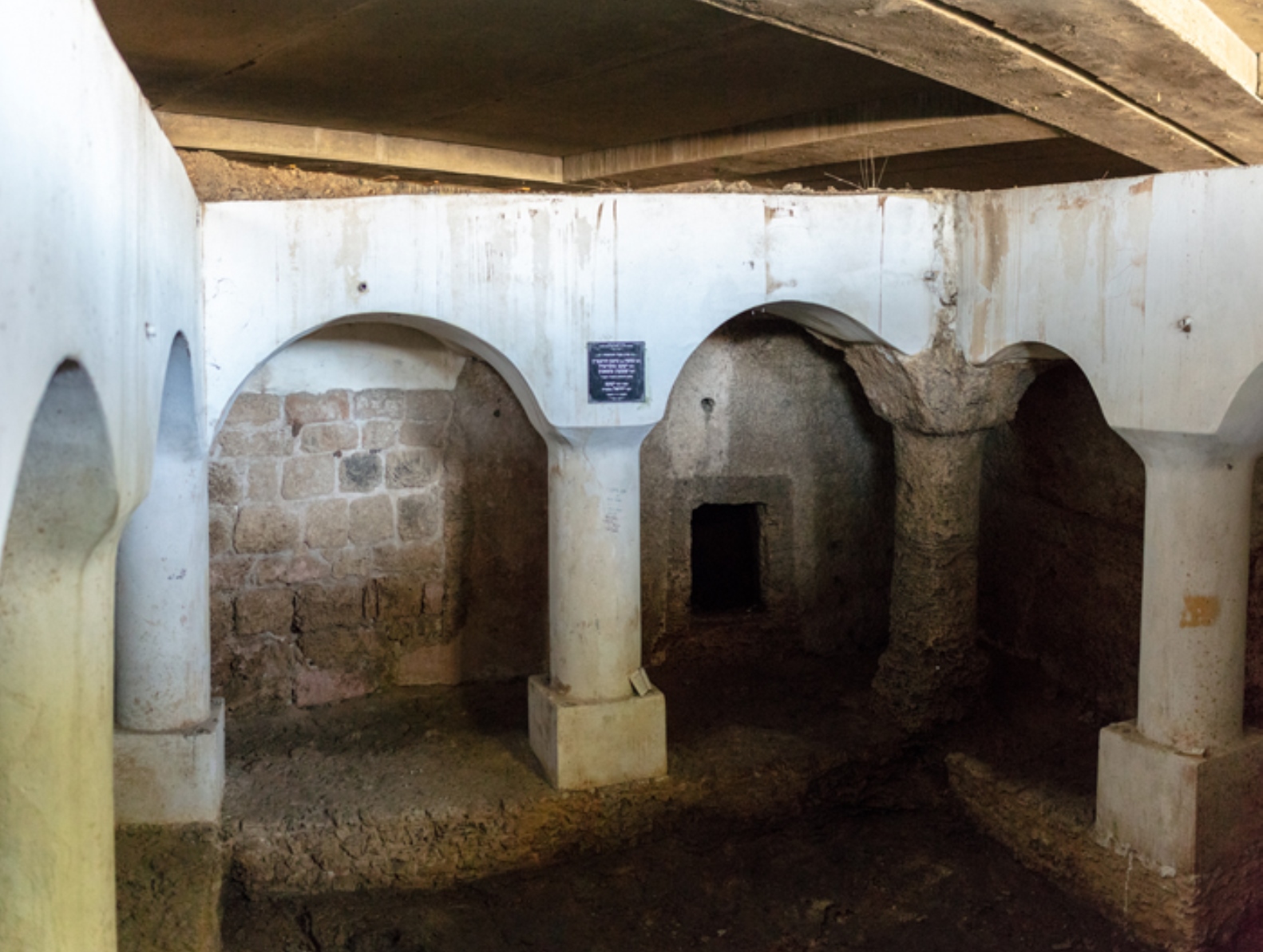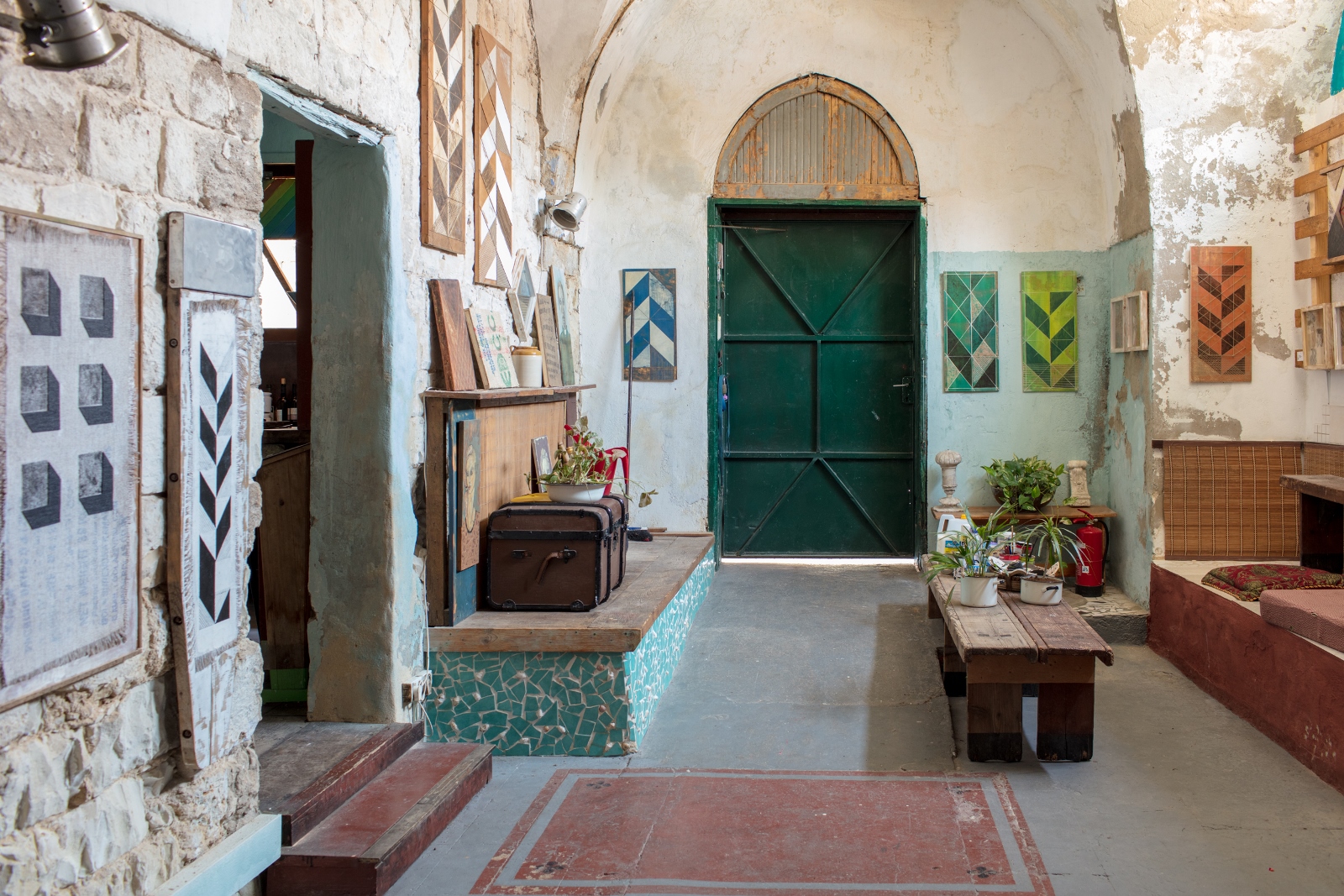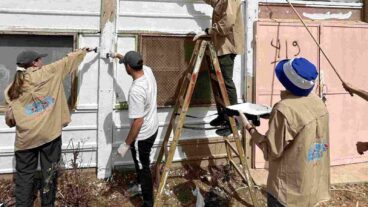A large group gathers at an ancient tomb hidden next to a busy urban thoroughfare underneath a set of train tracks in lower Haifa. The city’s head archaeologist, Limor Talmi, is giving a free tour of a burial cave from the Second Temple Period (530 BCE to 70 CE) containing the ornamental graves of four prominent Jewish residents.
Our flashlights shed a dim light on the back wall, exposing carved columns that are the remains of the original ancient city Hayfa El Atika (Old Haifa), as the street name above still indicates.

We were here in late July as part of the first-ever Open House Haifa event providing insider tours of some 50 houses and other sites drastically varying in style and origin. The tours were led by architects, city planners and art enthusiasts, who shared their professional and personal insights.

Open House Haifa was a joint production of the Pyramida Center for Contemporary Art’s Platform Project, the municipality and the Open Houses (Houses from Within) program that has been taking place in Tel Aviv for the last 12 years and in Jerusalem since 2007.
“We have wanted to do an Open Houses event in Haifa for many years now, but it hadn’t worked out for us up until this point, so the moment we were approached by Pyramida, we jumped at the chance,” says Aviva Levinson, founder and director of the Israeli project.
Pyramida is a creative coop of artists that made its mark on the city in the 1990s when the neighborhood it resides in was just a bunch of abandoned buildings begging to be decorated with street art.

Here in Israel’s third-largest city, people, architecture and cultures mesh along the hilly green Mediterranean port landscape. The city has a reputation as a place of coexistence and industry. But more accurately, Haifa can be described as a city comprised of little residential neighborhoods, each with its own flavor and flair.
On one of the scheduled stops, landscape architects Daphna Greenstein and Hila Rotem showed a Wadi Salib park they set out to design in the 1990s but only recently managed to actually implement — and according to the original blueprints, no less.

Other notable tours included one of the Dagon flour factory—a legendary building with lattice roofing that stretches an entire city block, and the archeological exhibit within that shows findings of ancient grain in the area.
Sites where most residents wouldn’t normally think to enter were also on the schedule, such as the city’s notorious oil refineries; and other spots that remain hidden in plain sight, such as the A-Saida Church and House of Grace, a 19th century Greek Orthodox church next to the city government complex, renovated in 1981 by Kamil Shehade and his wife Agnes to be used as a women’s shelter and rehabilitation center to this day.
Another site, the Gallery House, is the home of artist Shimon Cohen, who breathed life back into a deserted house in the heart of downtown Haifa. It now houses his studio and is also used for hosting cultural events for the area’s growing underground art scene.

“The goal is to discover the city, to simply get to know it, and to explore it to the fullest,” Levinson tells ISRAEL21c.
With this in mind, opening up little corners of the city to the public can help us all the understand the places we live that much better, their connection with history, and how it all ties in to how we live in these places today.














